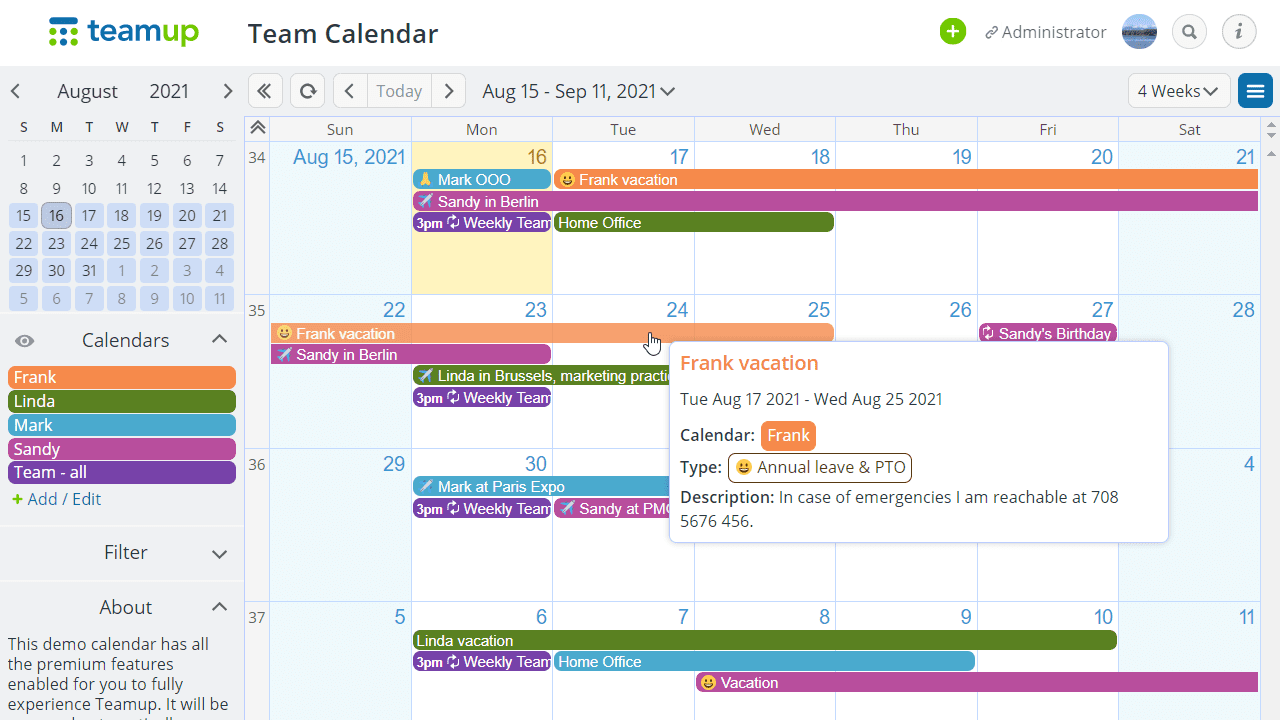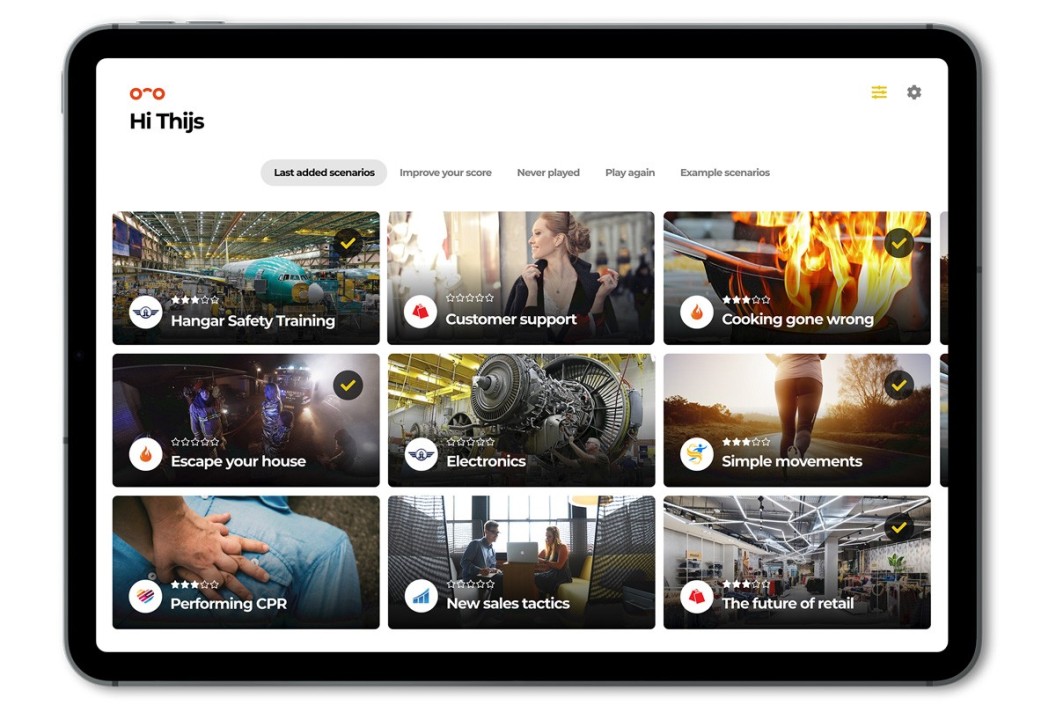Make a return-to-office (RTO) plan that's actually popular with these 3 insights.
How do you get people to want to come into the office?
Managers and HR leaders are grappling with this as companies eagerly try to increase in-person collaboration. A hardline approach requiring mandatory attendance might seem easiest but is often detrimental to employee morale and retention.
HR futurist and bestselling author Dan Schawbel[1] knows there are better ways to entice hesitant employees back to your building.
We summarized some of Schawbel’s insights from a series of interviews like the one below along with findings from a Capterra survey of 2,716 employees worldwide* to show you the engagement-focused strategies and HR software that can make a difference.
Insight 1: Return-to-office policies should facilitate—not eliminate—a hybrid model, so get strategic with your scheduling
“I think we’re all going to work hybrid in the long term,” says Schawbel. “It’s the best of both worlds for people who understand the value of the office, but don’t want to lose the independence and flexibility of working remotely.”
So, what does that look like? Instead of mandating set weekdays or hours for office attendance, you could set looser guidelines around what time workers can be in the office to avoid traffic or public transportation congestion.
Our survey shows this could actually be more effective than more expensive and complex perks meant to draw employees back in.

In fact, a flexible work schedule was one of the most popular benefits among survey respondents. It beat out other options such as transportation reimbursement and on-site childcare (chosen by 64% and 27% of respondents respectively).
Flexibility is not good for just employees—a Gartner study found 89% percent of managers report that offering flexible working options helps control attrition.[2]
But don’t think of flexibility as a silver bullet. Coordination is key to ensure colleagues are actually seeing each other in person.
“People don't want to work remotely when all their teammates are in the office, so scheduling and management are really important,” says Schawbel.
Employee scheduling software can help with that. These systems include a calendar management feature that can centralize everyone’s schedules and make them visible to others.
This makes it easier to set up shared team calendars showing when they typically expect to be in office so colleagues can plan around that and schedule in-person meetings accordingly.
In fact, calendar management is in such high demand that 78% of employee scheduling software users identified it as critical based on ratings given by verified software users on Capterra.**

A shared calendar that makes “home office” days visible[3]
/ Tech tip
Employee scheduling software has plenty more benefits that make it an appealing investment. Check out what other features users value most here.
Insight 2: Your office environment should be worth the commute—prioritize the employee experience
“We are in a work environment that is very disengaged right now,” says Schawbel. That’s certainly the case according to a Gartner study that found only 31% of employees report being engaged, enthusiastic, and energized by their work—despite increasing investments in employee experience initiatives.[4]
While this is a complex challenge with no easy solution, Schawbel says office attendance ties directly into improving engagement. When employees are face to face, it’s easier to create the kind of meaningful relationships with coworkers that make the office a place they want to go to.
“If you have great connections in the office, then you're more likely to go to the office and you're more likely to stay at your company,” he says. “If you don't, you're more likely to leave—even if you’re offered an extra $5,000 in your salary to stay.”
Our survey supports the notion that people feel so strongly about the way RTO (return-to-office) is handled that it can even push them to consider a pay cut.

If your goal is for your workforce to think it’s literally worth it to commute, then Schawbel says “building a sense of community” will go a long way.
Some office-friendly ideas for this include:
Set up monthly employee resource group meetings in the office. ERGs are great for fostering inclusivity and can connect colleagues across different departments on a more personal level. Find out what it would take to start different kinds of ERGs here.
Encourage managers to periodically run in-person whiteboarding sessions to discuss improvement opportunities within their teams. These sessions should end with actionable takeaways for responding to feedback since research shows responsiveness can improve employee engagement by up to 66%.[5] You can double down on this strategy in a hybrid environment by using employee engagement software to automatically send “employee pulse” surveys whenever you want.
Host quarterly town hall-style gatherings that always include employee recognition. Schawbel says it’s important for people to feel “praised and supported” so they don’t lose focus. You can use these meetings to share progress on mission critical priorities, and end on a high note with awards that reflect company values. Employee recognition software can automate the process of gathering award nominations, and can even generate reports showing who’s regularly giving and getting recognition.

Analytics dashboard showing recognition-related metrics (Source)
/ Tech tip
Employee engagement and recognition software can be purchased as stand-alone systems, but are often modules included in a broader suite of HR software. See a list of top-rated HR systems in this Capterra Shortlist.
Insight 3: Home office setups are rarely ideal—see how your office tech can trump them
“Leverage technology in the office space as part of the value proposition to get people back in,” says Schawbel. “The more that companies realize people want to use a more advanced version of the technology they have at home, they'll be able to get people excited to be in the office.”
In many cases, this won’t be a very high bar to clear. And research from Capterra* shows about 2 out of 5 employees who work from home at least part of the time say their home office does not fully meet their needs and preferences.
While those workers might be happy enough with upgraded office tech staples such as video conferencing software with sophisticated mics and cameras, Schawbel encourages business leaders to think bigger.
“Is there technology that you couldn't afford to have at home?” he asks, noting that augmented reality (AR) and virtual reality (VR) systems in particular could be a big draw since you’d need to commute for access to hardware like headsets.
It’s not as hard as you may think to come up with a business case for this tech. Several leading Learning Management Systems (LMS) already offer integrations with AR and VR platforms, making it possible to add interactive elements to training materials you already use.
For example, H&R Block uses VR to onboard call center employees. They put new agents in a simulated call with a virtual avatar so they can practice empathy and active listening before they need to use those skills with real customers. The results speak for themselves: This training program helped reduce dissatisfied customers by half and 70% of the company’s employees said they preferred the VR training over traditional methods.[6]

Virtual reality modules for different kinds of job trainings[7]
/ Tech tip
Can’t afford AR quite yet? See other ways you can make your physical office space more attractive than home setups, such “activity-based working” design examples, in this report.
Getting buy-in for RTO hinges on a plan that works for both businesses and employees
Of the 20% of employees in our survey who are required to work more days on-site at a company workplace now than they did a year ago, a majority (57%) feel negatively about it. It doesn’t have to be that way.
Take Schawbel’s insights and our tech recommendations into account as your company re-evaluates or creates an RTO policy:
Embrace a hybrid model with flexible, software-enabled scheduling
Prioritize the employee experience with the help of employee engagement and recognition systems
Consider investments in innovative tech like VR and AR to uplevel your LMS’ on-site training materials
Your next step is to work with your company’s leaders to align on which of these insights you’ll apply and when. Set yourself up for success by considering in advance whether you’d need any extra budget or training for some of the higher effort strategies.
Once you’re ready to roll out new RTO guidelines, ensure you’ve documented and communicated them across the organization so expectations are clear. Our free HR communication action plan template below can help you organize your communication efforts.


